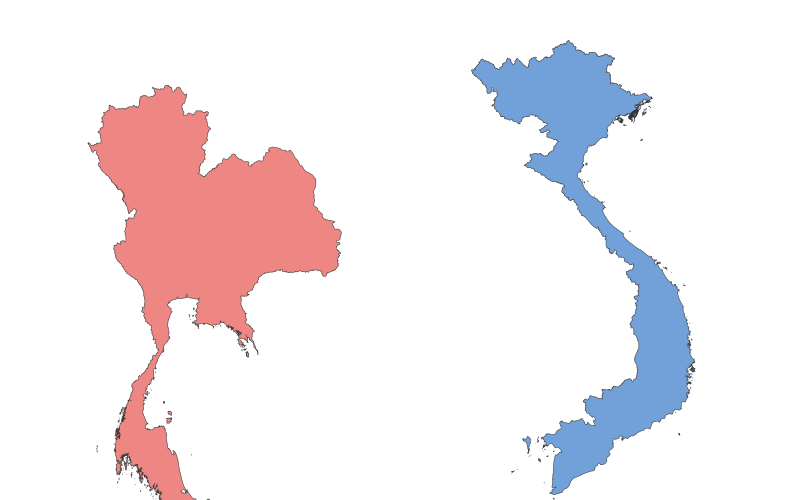Thailand vs. Vietnam: A Geographical Comparison

Comparison Table
| Category | Thailand | Vietnam |
|---|---|---|
| Location | Southeast Asia, bordered by Myanmar, Laos, Cambodia, and Malaysia | Southeast Asia, bordered by China, Laos, Cambodia, and the South China Sea |
| Size | ~513,120 km² | ~331,210 km² |
| Climate | Tropical (wet/dry seasons) | Tropical monsoon (north-south variations) |
| Natural Resources | Tin, rubber, natural gas, timber | Phosphates, coal, bauxite, offshore oil |
| Urban Development | Bangkok (major hub), Chiang Mai, Phuket | Ho Chi Minh City, Hanoi, Da Nang |
| Transportation | Extensive road networks, international airports | Growing highway system, busy ports |
Overview of Thailand and Vietnam
Thailand
Thailand, known as the "Land of Smiles," is a country rich in cultural heritage and natural beauty. Its history dates back to ancient kingdoms like Sukhothai and Ayutthaya, which shaped its unique Buddhist traditions. The economy thrives on tourism, agriculture (rice, rubber), and manufacturing. Bangkok, the capital, is a bustling metropolis blending modernity with temples and floating markets. The country's tropical climate supports lush landscapes, from northern mountains to southern beaches.
Vietnam
Vietnam, with its elongated S-shape, boasts a diverse geography from the Red River Delta in the north to the Mekong Delta in the south. Its history includes Chinese influence, French colonialism, and the Vietnam War, leaving a mix of cultural and architectural layers. The economy is rapidly industrializing, with exports (textiles, electronics) and tourism (Ha Long Bay, Hoi An) driving growth. Cities like Hanoi and Ho Chi Minh City contrast traditional pagodas with skyscrapers, while the countryside remains agrarian. The climate varies from cool winters in the north to year-round warmth in the south.